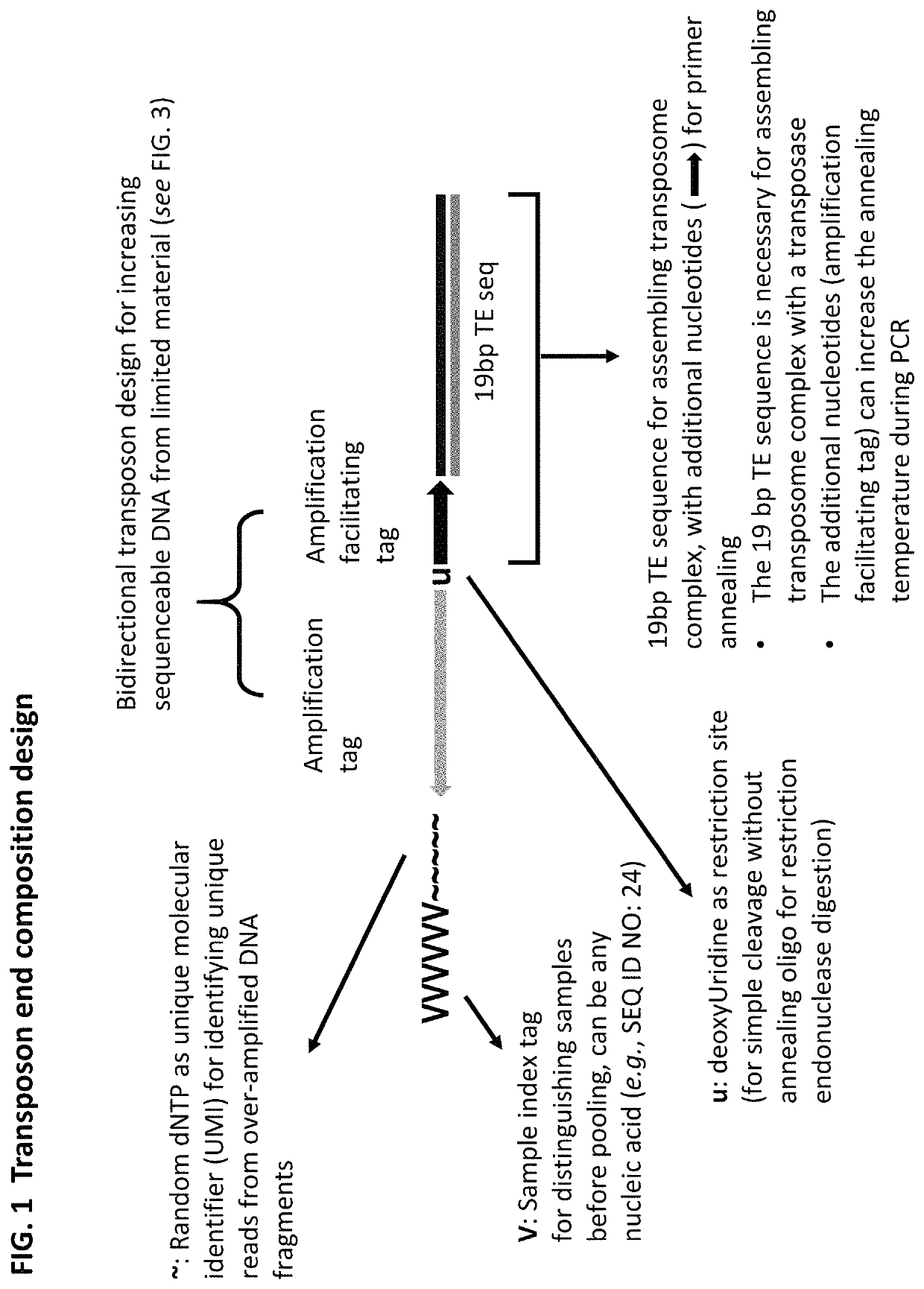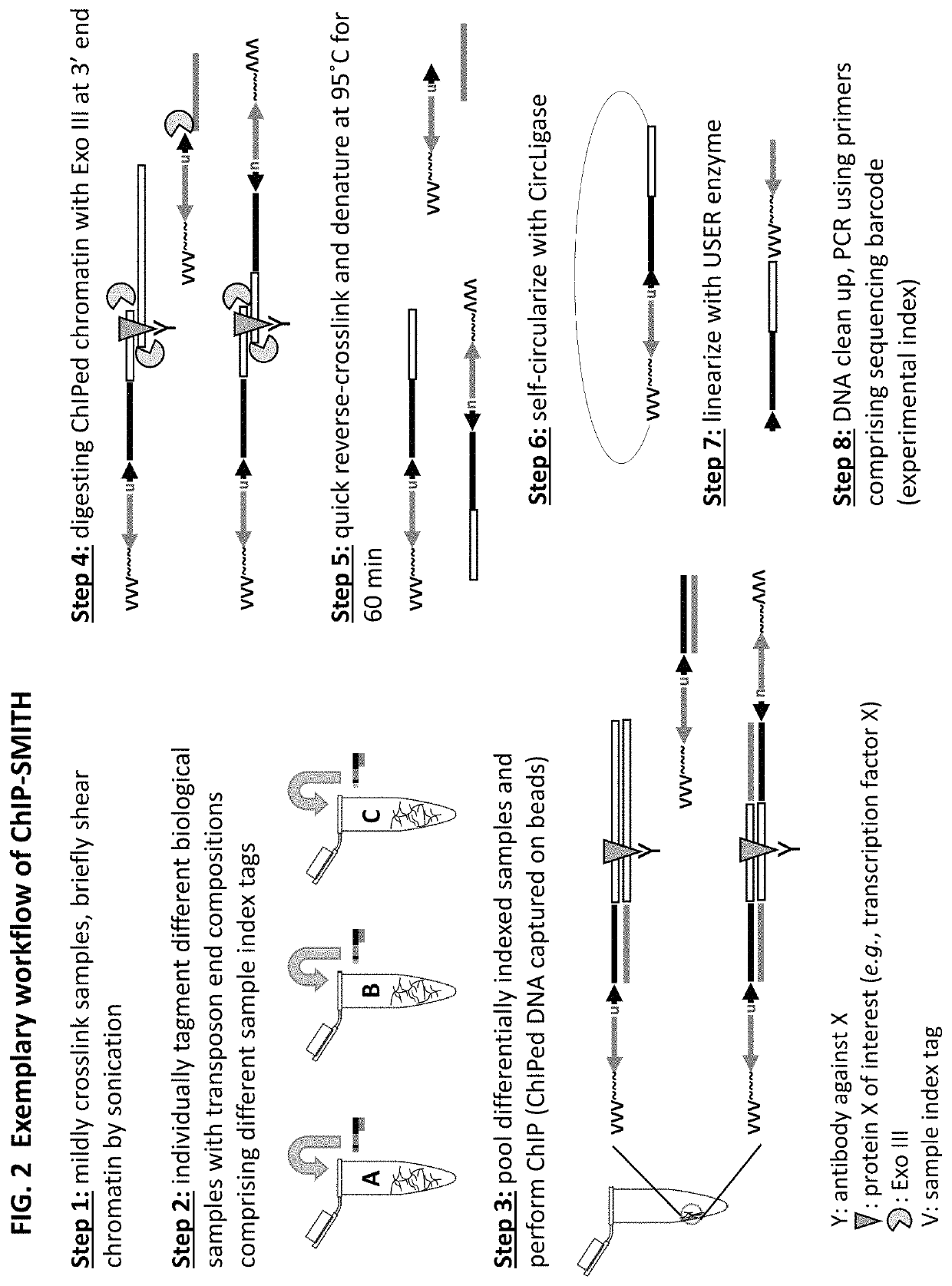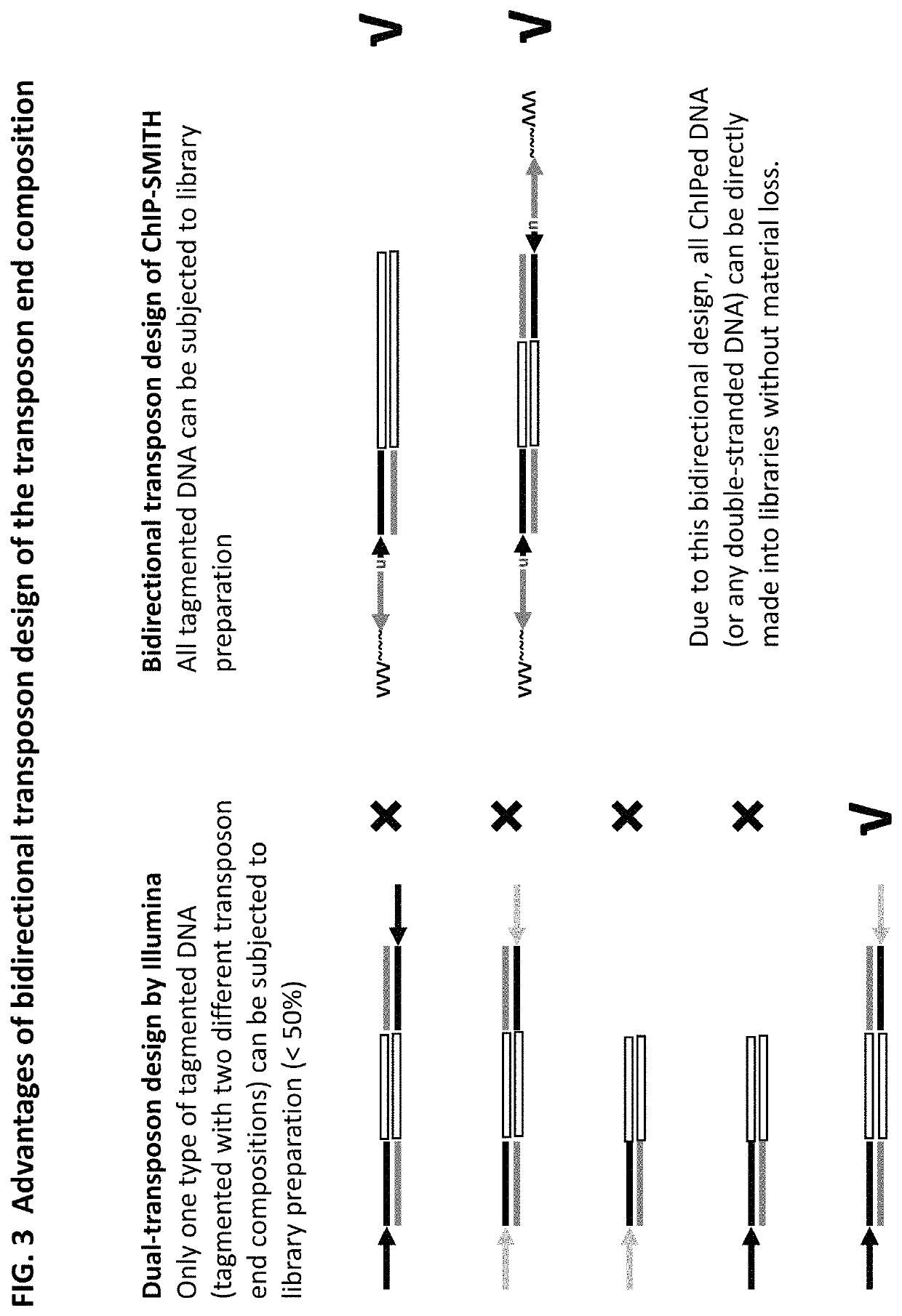Methods for detecting protein binding sequences and tagging nucleic acids
a protein binding sequence and sequence technology, applied in the field of protein binding sequence analysis, can solve the problems of time-consuming, less user-friendly, and large amount of starting materials for chip-seq experiments
- Summary
- Abstract
- Description
- Claims
- Application Information
AI Technical Summary
Benefits of technology
Problems solved by technology
Method used
Image
Examples
embodiment 1
[0349]A method of analyzing the binding sequences on a chromosome to which a protein of interest binds, comprising:[0350](a) randomly inserting a plurality of transposon end compositions comprising transposon end into the chromatin or double-stranded nucleic acid fragments thereof in the presence of a transposase;[0351](b) subjecting the double-stranded nucleic acid fragments inserted with transposon end compositions comprising transposon end to immunoprecipitation using an antibody specifically recognizing the protein of interest; and[0352](c) analyzing the nucleic acid fragment sequences to which the protein of interest binds.
embodiment 2
[0353]The method of embodiment 1, wherein the protein of interest binds directly or indirectly to the chromatin.
embodiment 3
[0354]The method of embodiment 1 or 2, wherein the protein of interest is selected from the group consisting of transcription factor, histone, histone modification, chromatin remodeler, chromatin modifier, transcription machinery elements, insulator binding protein such as CTCF.
PUM
 Login to View More
Login to View More Abstract
Description
Claims
Application Information
 Login to View More
Login to View More - R&D
- Intellectual Property
- Life Sciences
- Materials
- Tech Scout
- Unparalleled Data Quality
- Higher Quality Content
- 60% Fewer Hallucinations
Browse by: Latest US Patents, China's latest patents, Technical Efficacy Thesaurus, Application Domain, Technology Topic, Popular Technical Reports.
© 2025 PatSnap. All rights reserved.Legal|Privacy policy|Modern Slavery Act Transparency Statement|Sitemap|About US| Contact US: help@patsnap.com



